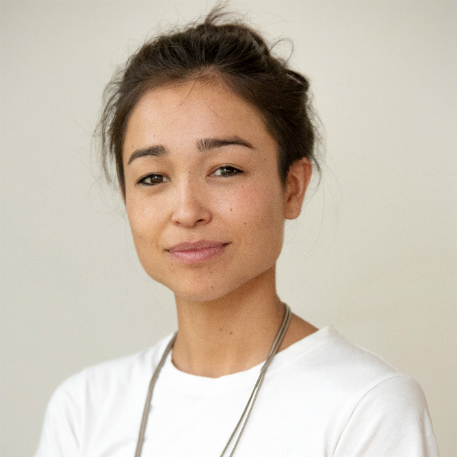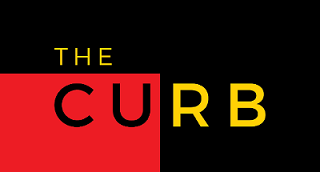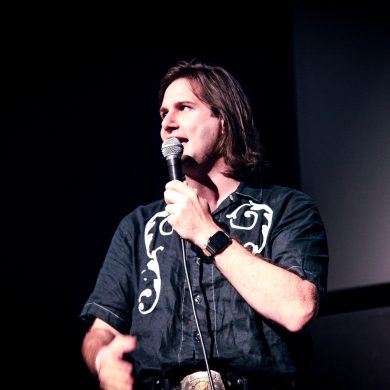Maya Newell is a filmmaker who has managed to redefine what the label of ‘director’ means when it comes to documentary filmmaking. With the downright essential In My Blood It Runs, Newell utilised the knowledge and communal spirit of the Arrernte and Garrwa people of the Northern Territory to help tell the story of Dujuan as he pushes against the colonial education system forced upon him and searches for a First Nations education for all. It’s a powerful film that comes after Newell’s debut documentary Gayby Baby, a personal film that established her as one of the most vital filmmakers of her generation.
With her latest film The Dreamlife of Georgie Stone, Maya Newell collaborates with transgender teen Georgie Stone to tell a beautiful, tender, and inspirational story of activism, gender affirmation, and a call for support for trans, gender diverse and nonbinary youth in Australia.
In this interview, taken just after the short documentary launched at the Sydney Film Festival, Maya talks about her collaborative process, calling for a revolution in documentary filmmaking, what it meant to have a wealth of archival footage to work with, and managing the public and private life of Georgie on film.
This interview has been edited for clarity purposes.
The Dreamlife of Georgie Stone screens at Perth’s Revelation Film Festival from July 7 to 17. Visit the website for tickets.
Georgie Stone was wonderful to talk to, just a lovely person. I imagine making a film with her would have been equally wonderful.
Maya Newell: Yeah, it was. We’ve known each other for a long time now and we had a very sparkling premiere last night at Sydney Film Festival. We’re all on a high from that.
How did that go?
MN: It was really wonderful. I think when you’ve been working on a film for so long, sharing it into the world is very nerve-wracking in some ways and hoping that the audiences will like it. But it’s also a huge breath of release, and relief to finally share it with the world.
I understand [that it’s been] six years you’ve been making this film. Can you go back to the start of when you began? What was the original discussion that you had with Georgie and her family?
MN: To be honest, for a long time we didn’t know what form the film would take. Even when I approached Georgia and Beck [Robertson, Georgie’s mum], there wasn’t a formed idea. It really sparked my interest, I suppose, after making Gayby Baby and seeing transgender young people and children from same-sex families being really thrown under the bus during the marriage equality debate and Safe Schools debacle, and wanting to learn more about these young people.
With Gayby Baby, I’d seen the power that children have when they speak truth to power. Those young people really caught the attention of the nation and contributed to the legislative change that followed. With In My Blood It Runs as well, seeing Dujuan, a young child like that speak up and have so many wisdoms about the world, I really think children have a lot to teach adults.
So I was interested in meeting Georgie and as soon as I met her, she was this bubbly, warm, wise voice who was incredibly eager to be filmed, to be in front of the camera. At that time, obviously Georgie had been through a lot and had not been in the public arena at all. Yet it was prior to her being on Four Corners and Australian Story. Her family were understandably protective about her doing media or being public. But she really felt like she had a story that she wanted to share with the world, and that there was a lot of advocacy that she was excited about. So we just filmed.
It was six years but obviously, it wasn’t every day. But it was very observational. I’d go over maybe every two or three months and sit up at the kitchen bench and drink cups of tea and talk about all the things that had happened and what Georgie would like to film. And we really workshopped her messages and what she wanted to put out into the world. So that really guided my lens in what I was going to film and the kinds of things that I would look out for in the kind of observation style that I have.
That collaboration eventually turned into Georgie holding a producer’s credit on the film and a very complete equal partnership in the edit and actually putting the film together. Georgie was much older by the time we were putting it together and was an excellent storyteller in her own right.
I love that collaborative experience that you have with your films. You’re more than just a director telling a story. You are working alongside your subjects to share their story. How important is that for you with telling the stories?
MN: It’s absolutely paramount. And I think that it should be for all filmmakers that are working with people from marginalised communities in particular. Obviously, there’s different kinds of films, but I think we need a bit of a revolution in documentary which honours and respects the subjects at the core of a film who are courageously sharing their lives on screen. It’s incredibly important that they feel that they’re correctly presented. Many of the people in my films have had their stories misappropriated throughout history by the mainstream, and we cannot allow our film productions to continue that cycle of misappropriation and stealing stories.


I’ve had a lot of time to think about this through my films, but particularly on In My Blood It Runs and learned from an incredible producer, Rachel Edwardson [who] is a First Nations filmmaker on that film with whom I spent a long time thinking about this and co-ran workshops on that film between the amazing history of First Nations and people of colour, Screen Australia’s Pathways & Protocols document which is a world-leading way of working, produced by their Indigenous department. There’s lessons there for films about all topics.
Even last night when we were presenting the film together, Georgie watched the film and has been a part of its creation many times. There were no surprises on that big screen, apart from how scary it was to watch your film on a big screen. It meant we could both relax and celebrate together.
One of the things Georgie was talking about when I interviewed her just before was recognising the level of privacy that she might have not been afforded by being public, and learning to balance the private life with the public life. Can you talk about how you as a director and a collaborator help to protect that private life on film?
MN: I think that’s right, Georgie has a very strong public presence, and especially now being a celebrity actor on Neighbours. And she’s also prior to this film coming out been on Australian Story and had a lot of her life used as political advocacy. I think in the making of this film, the appeal for her in particular was that she would have control over the process and the story and the making, which meant that there are incredibly intimate moments between Georgie and her family, arguably the most amazing access and intimacy on screen compared to anything that she’s done before. But they were moments that she allowed me into as opposed to being pressured.
I think that sometimes with collaboration or if you have control over your own story, people think that you’re not going to share private things or intimate moments or dramatic moments in filmmaking terms. But my experience time and time again is that if you hand over that power and allow subjects to decide what they would like you now to film or you genuinely give them the power to decide once things are filmed whether that goes in or out of the film, then they can choose what goes in. And that means often more than not, you can share incredibly intimate moments. It just means that you create the context around that moment that makes it safe to share, when they’re a part of creating the context that feels correct and truthful.
Georgie’s parents had a lot of home videos. What was that like getting to see that huge amount of home footage of Georgie and her brother growing up?
MN: It’s so beautiful. I love archives so much. And the film really relies heavily on this beautiful trove of documentation from when Georgie and her brother were born. When we were allowed to look through those moments and use them, it really steered the creative direction towards this idea of memory and all the moments that make us. So the film really launches from this point of Georgie sort of transition into adulthood when she’s looking back on all the fights that she’s been through in her teenhood and affirming her gender and fighting laws and thinking about all of these moments that made her. So we’ve kind of played in the film archives her memories.
What was the decision behind making it into a short as opposed to a feature?
MN: We originally pitched it as three short films over the course of Georgie’s life that would make a feature in 40 years. (laughs) Which was very beautiful and ambitious. I suppose it was a creative decision with Georgie, with the incredible editor Bryan Mason and producers Sophie Hyde and Matt Bate who all came on to help piece this quite complicated narrative structure together. It just felt like the right length. Georgie has a number of films that tell a bigger story or that are longer, but this was a creative venture to really lean into that elliptical, non-linear style, and it felt we could make something very powerful with 30 minutes. It felt right. In the end, Netflix and Screen Australia who are our presenting partners were very open for the film to be whatever length it needed to be, which is a creative freedom that I’m very thankful for.
Have you noticed nowadays because of the rise of streaming that that kind of creative freedom for length is available to more filmmakers? They don’t all have to be 90 minutes on the dot, they can be various different lengths.
MN: This is the first film that I’ve made for a streaming platform for Netflix, as a Netflix Original. We were delightfully surprised when they had no notes on length ever. Which is often the big note you get from broadcasters and other screen agencies. So it was wonderful. They consistently said, “Just let the film be whatever length it needs to be. It doesn’t matter.”
What I like about this film is that because of the non-linear way that you’re telling the story, it feels otherworldly in a way. Is that a cross of stylistic choices there? Where did that otherworldly feeling come from?
MN: I think it came originally from Georgie who wanted to make something that was really different to the kind of current affairs shows that she’d done before that told her story in detail of the court battles and stuff. We wanted to make something that was creative and for film festivals and for film lovers. Closer Productions and the producers there had a big influence on really thinking creatively about how to use that incredible trove of archive which at the end of the day, when you come up with all the things you have, you have to look at what you’ve got. And we all agreed that the archive was so beautiful, we really wanted to find a structure that could reveal that.


I think the point to be made about this archive which becomes clear in the film is that Georgie has such a beautiful coherence of self from an incredible interview when she’s nine when she’s very capable of articulating who she is and her relationship to her gender. And that consistency remains for the next ten years and has been remained since she was a toddler, when you’re watching the film. That felt like it could visually present the story and the message that we wanted to send, holding to that as a core line.
It was everyone that came together to come to design this beautiful elliptical style. I should also mention producer Matt Bate. I’m very interested in gathering all the producers who have many, many different skills. So you’ll see all my films have many producers and then me running around doing a lot of the filming and doing everything else, a one-woman camera operation. Matt Bate had made Shut Up Little Man and Sam Klemke’s Time Machine and a number of films that rely heavily on archives. So he came on and was really significant in finding that beautiful cutting style where you cut through ten different ages as Georgie curls her hair behind her ear.
What does that look like in the editing room? Is it writing it down on paper? Is it storyboarding?
MN: Working with the amazing editor Bryan Mason, we don’t do a lot of storyboarding. It’s a lot of feeling your way through it. And I think because I haven’t made something quite so non-linear before, it’s often a feel rather than finding all of the little bits. So I rough-cutted the film and collected images throughout all of the footage, the many, many years which you can imagine there was quite a lot. It’s probably the most amount of footage for a short film. (laughs) You’re right, we could have made a feature in some ways. And then yeah, got in the edit and really worked intuitively with Bryan’s incredible mind.
I assume that you were filming this around the same time that you’re doing In My Blood It Runs. Is that right?
MN: Yes.
How do you balance telling two different stories and creating two different stories in a documentary format at the same time?
MN: I don’t know, I just sort of did it. I suppose because we for a long time didn’t know where the film was going or the kind of form that Georgie wanted to take. We really only started the edit after we’d finished a lot of even a year of impact on In My Blood It Runs so there’s lots of overlap with the filming. But it was nicely spaced to jump into a creative mindset after working on the impact campaign for In My Blood It Runs for a number of years.
How important are impact campaigns for films like this? You’ve got one for Dreamlife, you had one for In My Blood It Runs. Are they super important to help keep the story alive in audiences and the discussion alive afterwards?
MN: I really had an epiphany around impact film when I was introduced to it through Good Pitch Australia and Doc Society in the making of Gayby Baby. At the heart of my motivations for making these films is really social justice. I’ve learned a lot from my colleagues Alex Kelly, Malinda Wink, the Doc Society team that just raising awareness and playing at film festivals or in the cinema is not enough. We’ve spent in many cases many, many years making this film and telling the stories alongside our participants. And it feels like our kind of duty as filmmakers to ensure that that story continues on to do work to change the status quo of the narratives that we’re depicting on screen.
With Dreamlife, we’re really excited about the work that we’re going to do. We’ve raised a bit of money from some amazing philanthropic supporters to do a parallel campaign mostly bursting out around the Netflix release in September. There’s a Dreamlife Youth Committee who will be making a publication alongside the film by and for trans people about their dreamlives representing to politicians later in the year. We’ve got space to do parliamentary screenings, to support our leaders and decision-makers to better understand trans young people and their lives and challenges. And then a whole lot of work around celebrating the voices and encouraging access to services that were really being led by Transgender Australia, The Gender Centre and a number of trans-led organisations who will be driving that campaign, obviously who know much more than us as filmmakers. I really see the work of films is to back and amplify the grassroots, those who have been fighting these campaigns for a long time and will continue to far beyond the film’s release.
We now have an Arts Minister who is really dedicated to supporting the arts. How important is it for you as a filmmaker to have somebody in government who recognises the importance of Australian film?
MN: Oh, it’s absolutely wonderful, and will have huge impacts on filmmakers. It’s so wonderful to have government backing in support of the arts. It feeds our society, arts and film. Yeah, very excited about this new government. We’re very excited about what’s to come down the pipeline.
I want to talk about your work as a filmmaker. When you started off, did you have the notion that you always wanted to tell stories about social justice, about these kinds of issues that don’t usually get explored in films?
MN: I think social justice is the heartland of documentary. I’m really motivated by that beautiful coming together in documentary film of social justice and art. It’s those two things that are working alongside one another that sort of feeds my creative urge, but also does good in the world.
The last question is about being an Australian filmmaker. What does it mean to you to be an Australian filmmaker working today?
MN: I think I feel very lucky and privileged to be a filmmaker in general. It’s really hard but also a glorious and glamorous job. I love it more every day. I couldn’t imagine doing anything else. I think the Australian part in particular, I think we have a very amazing continent. But I also think that there are so many things that we need to come to terms with as a nation. And therefore, us as storytellers can keep society being their best selves and highlight and amplify those voices that don’t always get space, and breed empathy and understanding that sort of holds the glue, that sort of large cultural consciousness together. I suppose that’s how I see my role and the many roles of people in the arts.




